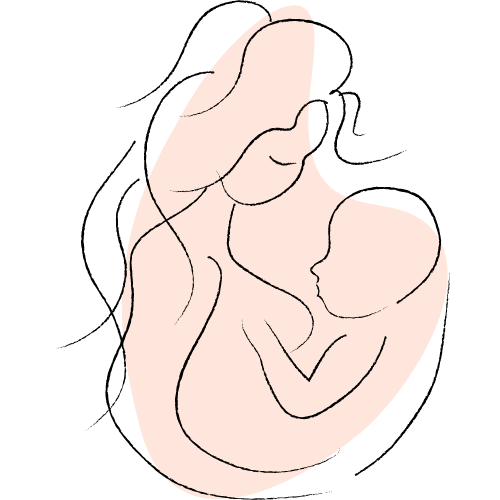Waiting for your 20-week ultrasound to find out if you’re having a baby girl can seem like an eternity. While medical tests are the most reliable way to determine your baby’s gender, many old wives’ tales offer intriguing, though scientifically unproven, predictions. These myths can be entertaining and add a bit of fun to your pregnancy journey. Here’s a look at some popular gender prediction myths associated with having a baby girl.
The Heartbeat Theory: Fast Heartbeats and Baby Girls?
One widely circulated myth suggests that if your baby’s heartbeat exceeds 140 beats per minute, you’re expecting a girl. According to this belief, girls have faster heart rates than boys. However, scientific evidence does not support this claim. Heart rate can vary for many reasons and is not a reliable indicator of gender.
Carrying High: The Position of Your Baby Bump
Another old wives’ tale proposes that if you’re carrying your baby bump high, you’re having a girl. This myth implies that the height of your bump can signal the baby’s gender, with a higher bump supposedly indicating a girl. In truth, the shape and height of your bump are influenced more by your body type and the baby’s position than by gender.
Morning Sickness: Severe Nausea and Baby Girls
Severe morning sickness, especially in the first trimester, is often linked to carrying a girl. The theory suggests that female fetuses cause more intense nausea due to their hormonal differences. Although hormonal variations may affect morning sickness, it is not a dependable method for predicting gender.
Cravings: Sweet Tooth and Gender Predictions
Pregnancy cravings are another area rife with gender myths. If you crave sweet treats like chocolate or fruit, some believe you’re having a girl. Conversely, cravings for salty or sour foods are thought to indicate a boy. Cravings are more likely related to your body’s nutritional needs rather than your baby’s gender.
Mood Swings: Emotional Changes and Gender
Frequent mood swings during pregnancy are sometimes attributed to carrying a girl. The myth suggests that a female fetus causes more significant hormonal changes, leading to increased moodiness. However, mood swings are a common part of pregnancy regardless of whether you’re having a boy or a girl.
Skin Changes: Complexion and Baby Gender
An old saying claims that carrying a girl results in more skin breakouts or a dull complexion, while a glowing appearance might suggest a boy. This theory is rooted in the belief that a girl “steals her mother’s beauty.” In reality, skin changes are more likely due to hormonal fluctuations rather than the baby’s gender.
Hair and Nails: Slower Growth and Baby Gender
Another myth suggests that if your hair becomes thinner and your nails grow slower during pregnancy, it could mean you’re having a girl. While these changes can occur, they are typically related to hormonal levels rather than the baby’s sex.
Baby’s Movements: Gentle Rolls vs. Vigorous Kicks
Some believe that the nature of your baby’s movements can hint at their gender. Gentle, rolling movements might be associated with a girl, while more vigorous kicks could indicate a boy. However, movement patterns can vary widely and are not a reliable gender predictor.
The Skull Theory: Ultrasound and Gender Predictions
The skull theory proposes that the shape of your baby’s skull in an ultrasound image can determine gender. A rounded lower jaw and a tapered top of the head are thought to indicate a girl. While some parents find this method intriguing, it lacks scientific validation.
Other Gender Prediction Myths
- Pupil Dilation: If your pupils don’t dilate when you look in the mirror, some say you’re having a girl.
- Wedding Ring Test: Swinging a wedding ring on a thread over your belly may reveal a girl if it moves side to side.
- Garlic Test: Eating garlic without smelling of it afterward is another sign thought to predict a girl.
- Age and Month Calculation: Adding your age at conception to the month number and getting an odd result is said to indicate a girl.
- Sleeping Position: Preferring to sleep on your right side is sometimes believed to mean you’re having a girl.
The Bottom Line: Myths vs. Reality
While these old wives’ tales can be entertaining, they lack scientific backing. The only reliable ways to determine if you’re having a baby girl are medical procedures such as ultrasounds, amniocentesis, or non-invasive prenatal testing (NIPT). Until you can confirm your baby’s gender, enjoy the guessing game and remember that these myths are just for fun. Focus on maintaining a healthy pregnancy and preparing for your new arrival. Cherish this special time and enjoy the anticipation of meeting your little one.
